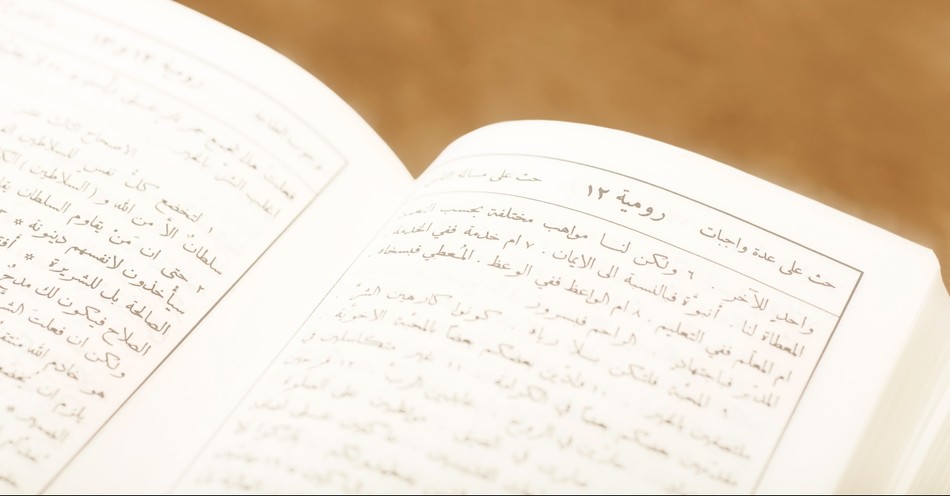Pop quiz, what were the original languages of Scripture?
Most of us might venture answers such as Greek or Hebrew. After all, maybe we learned a Greek word like logos and how it applied to John 1, or we saw someone get a Hebrew word from the Bible as a tattoo.
But many of us forget about a third language in which the writers penned Scripture: Aramaic.
For instance, we find portions of Ezra and Daniel containing Aramaic, the language of the common people. Back during the time of Jesus, the Jews would have spoken multiple languages from Hebrew, Aramaic, and the lingua franca at the time (most likely Greek).
Now, what does this have to do with the title “Peshitta”?
Peshitta is a “collection of Aramaic manuscripts of the Bible.” Many Syriac churches will use this version of the Bible as their primary text.
This seems innocuous enough, but this manuscript has drawn a great deal of controversy. We’ll dive into some of those controversies here, discuss the original language of the New Testament, and touch on why this matters to us today.
The Peshitta Controversies
As mentioned above, this manuscript has drawn a number of controversies. First, and primary, those who use this version of the Bible as their primary text often adhere to something known as “Aramaic Primacy.”
Those who assert this position believe that the New Testament writers didn’t write the manuscripts in Greek but rather Aramaic.
We know, from the language of the Aramaic used in these manuscripts, that certain dialects used in the Peshitta manuscript existed centuries after Jesus’ time. Therefore, scholars overwhelmingly believe the New Testament writers penned the latter half of the Bible in Greek.
Check out some examples here about the differences in dialect and language of the Aramaic throughout the centuries.
The Peshitta manuscript also runs into another controversy through its connections with someone known as George Lamsa, who believed in the Nestorian heresy. This heresy believed Jesus existed as two persons rather than one person with two natures.
Lamsa, who aligns with Nestorian views, asserted the idea of the New Testament being originally written in Aramaic.
We do, however, have to venture into precarious territory here and avoid committing ad hominem fallacies. Simply because someone has faulty views on the incarnation of Christ does not necessarily mean they have erroneous conclusions on other spiritual matters. But it does mean we should exercise discernment if they do commit a heresy.
Why Did They Write the New Testament in Greek?
We do know that the writers of the New Testament most likely spoke the every-day language of Aramaic. So why doesn’t this draw the conclusion that they wrote in the lingua franca of Jews?
To answer this, we have to look at the motive of New Testament writers. Jesus ministered to the Jews, but they received the Great Commission (Matthew 28:16-20) to spread the gospel to the ends of the earth.
Then the eleven disciples went to Galilee, to the mountain where Jesus had told them to go. When they saw him, they worshiped him; but some doubted. Then Jesus came to them and said, “All authority in heaven and on earth has been given to me. Therefore go and make disciples of all nations, baptizing them in the name of the Father and of the Son and of the Holy Spirit, and teaching them to obey everything I have commanded you. And surely I am with you always, to the very end of the age.”
This meant reaching the Gentiles.
To do so, they needed to write in a language used by most of the known world. Thanks to Hellenization, that meant Greek.
Why Does This Matter?
Why should we care about the original language of the Bible? After all, we have a version of Scripture in our own language.
It matters because if we don’t know the original language of the Old or New Testament, we run the risk of translation errors. Or manuscripts in the earlier centuries could’ve gotten away with butchering the meaning of Scripture, and we wouldn’t know the better.
But because we have older, Greek manuscripts, we can compare and contrast and see that not much (aside from punctuation) changes in Scripture throughout the centuries. This also matters because if we have Christian friends of the Syriac tradition, we can know they may have differing views about the original language of the New Testament.
Of course, this won’t cause rifts in our friendships with these believers. At least, we hope not, but it can help us greater understand the traditions from which they hail.
Finally, knowing church history has benefits. If someone all of a sudden said, “The New Testament was originally written in Latin,” if we know our church history, and know examples of older biblical texts that reflected the original language, we can show the error of statements like this.
Photo Credit: ©iStock/Getty Images Plus/Design Pics
Hope Bolinger is an acquisitions editor at End Game Press, book editor for hire, and the author of almost 30 books. More than 1500 of her works have been featured in various publications. Check out her books at hopebolinger.com for clean books in most genres, great for adults and kids. Check out her editing profile at Reedsy.com to find out about hiring her for your next book project.



